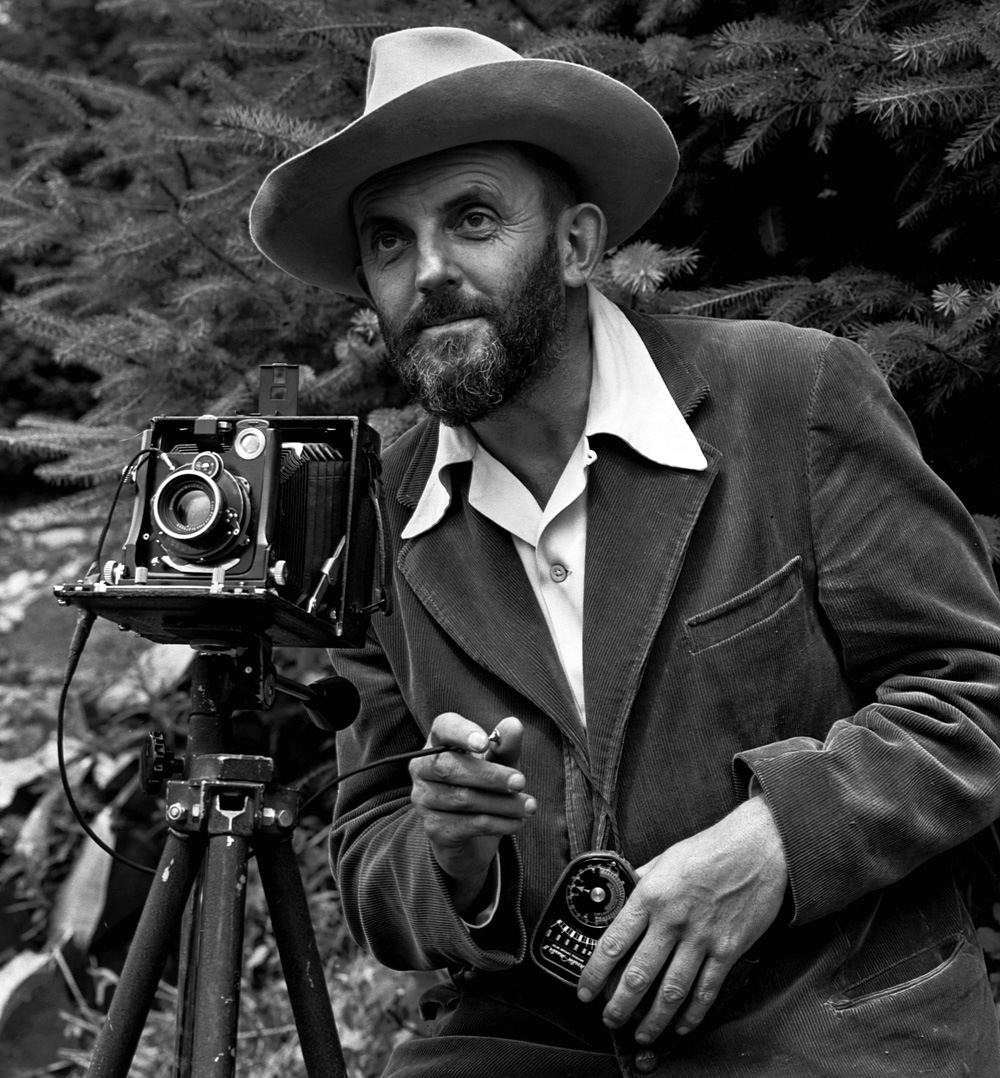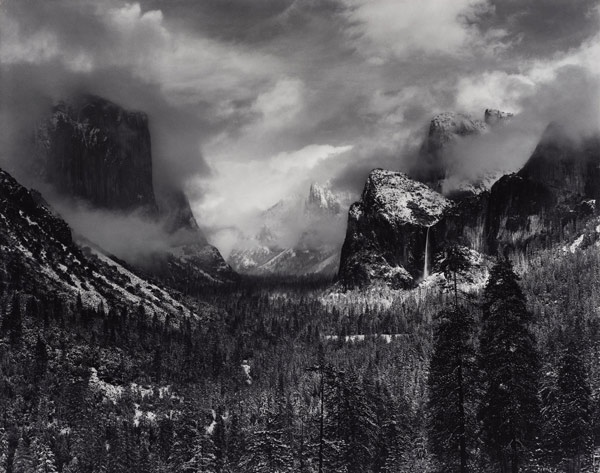
America’s greatest landscape photographer, Ansel Adams was born in 1902 and grew up in San Francisco’s remote Golden Gate area long before the bridge was completed in 1937. As a boy, he reveled in the sand dunes and his hikes to the water’s edge. The great passion of his life, though, was Yosemite Valley and the Sierra Nevada, which he first visited—and did his first photography—at the age of 14. “I knew my destiny when I first experienced Yosemite,” and from then on his life was, as he put it, “colored and modulated by the great earth gesture” of that landscape. He went to the Sierra every year until he passed away in 1984.
Adams became active in both the Sierra Club, where he served as a longtime board member, and The Wilderness Society and wrote a steady stream of letters to newspapers and public officials on wilderness issues. Blessed with boundless energy, Adams, with his distinctive, exacting black-and white images, was giving nationally-noticed shows by the 1930s. He used his images to protect the environment for the first time in the campaign to preserve the upper Kings River watershed and his efforts were critical to the legislation creating Kings Canyon National Park in 1940.
Working broadly throughout the American West and Alaska, Adams’ photographs were used in many conservation efforts and also contributed to the building of a conservation ethic in the post-World War II years. John Sexton, himself a master photographer, said of Adams that “He combined his passion for the preservation of the environment with his passion for photography almost seamlessly. He used his photographic skills to convey his personal excitement for the natural environment, as well as the irreplaceable value of the wilderness experience.” William Turnage, President of The Wilderness Society and author with Adams of The American Wilderness, one of the best of the many collections of Adams’ work, also explained how Adams’ artistry and activism blended together: “When people thought about the national parks or nature itself, they often envisioned them in terms of an Ansel Adams photograph…. He created a sense of the sublime magnificence of nature that infused the viewer with the emotional equivalent of wilderness, often more powerful than the actual thing.”

Late in life, Adams received many honors, including the Presidential Medal of Freedom, America’s highest civilian award, for "his efforts to preserve this country's wild and scenic areas, both on film and on Earth. Drawn to the beauty of nature's monuments, he is regarded by environmentalists as a national institution. It is through his foresight and fortitude that so much of America has been saved for future Americans.” Shortly after his death, Congress created the spectacular, 230,000-acre Ansel Adams Wilderness Area, which includes the Minarets and is contiguous to his beloved Yosemite.
America’s Top 10 Conservation Heroes is a series honoring the individuals and organizations that have made the biggest mark on conservation, environmental protection, and awareness of the outdoors. The series is written by Charles Wilkinson, Distinguished Professor at the University of Colorado and author of fourteen books on law, history, and society in the American West.
Header Photo: "The Tetons - Snake River" by Ansel Adams (Courtesy of the National Archives)
America’s Top 10 Conservation Heroes
1. Theodore Roosevelt
2. John Muir
3. Rachel Carson
4. Stewart Udall
5. Aldo Leopold
6. Ansel Adams
7. Earthjustice
8. Henry David Thoreau
9. Edward Abbey
10. Bruce Babbitt
